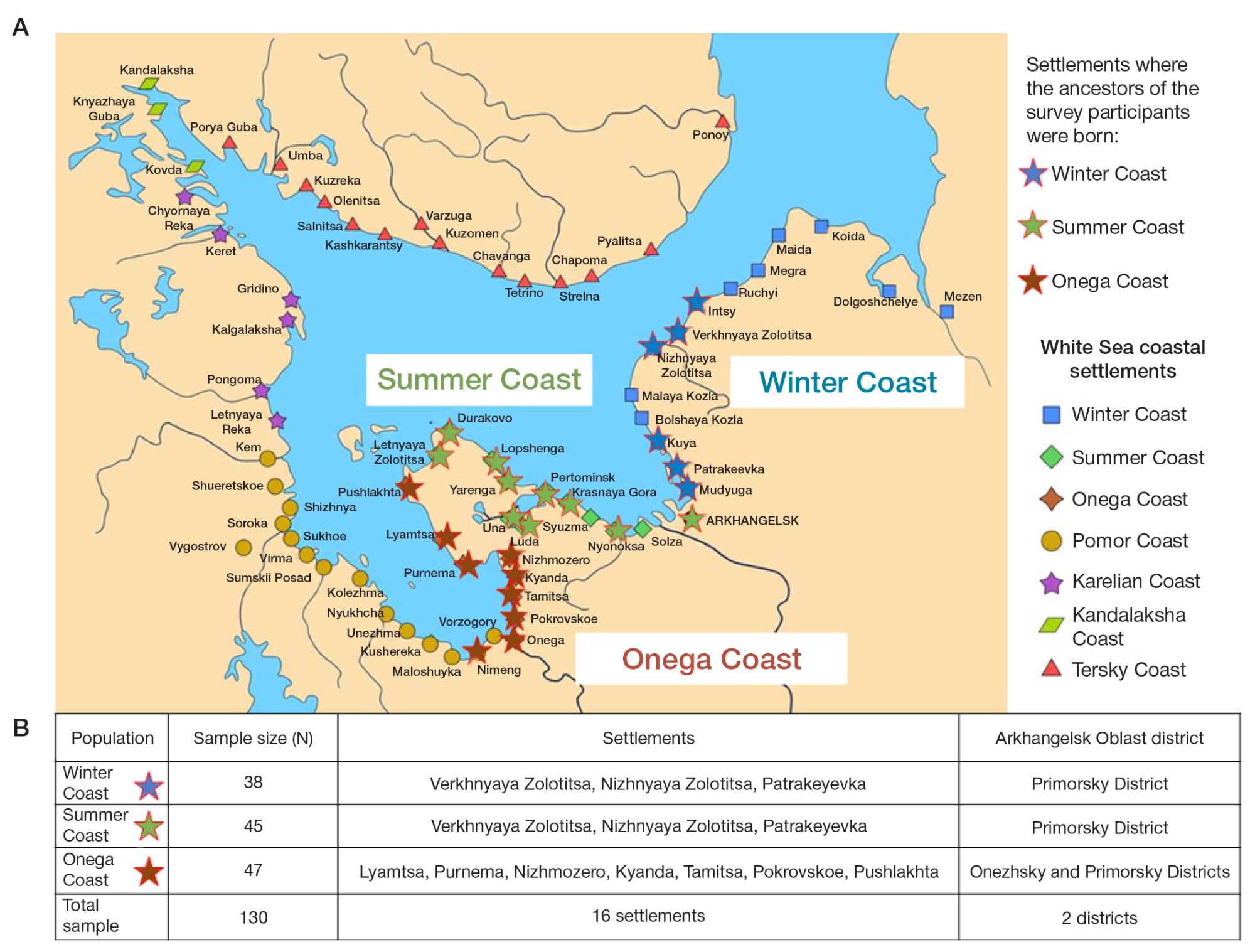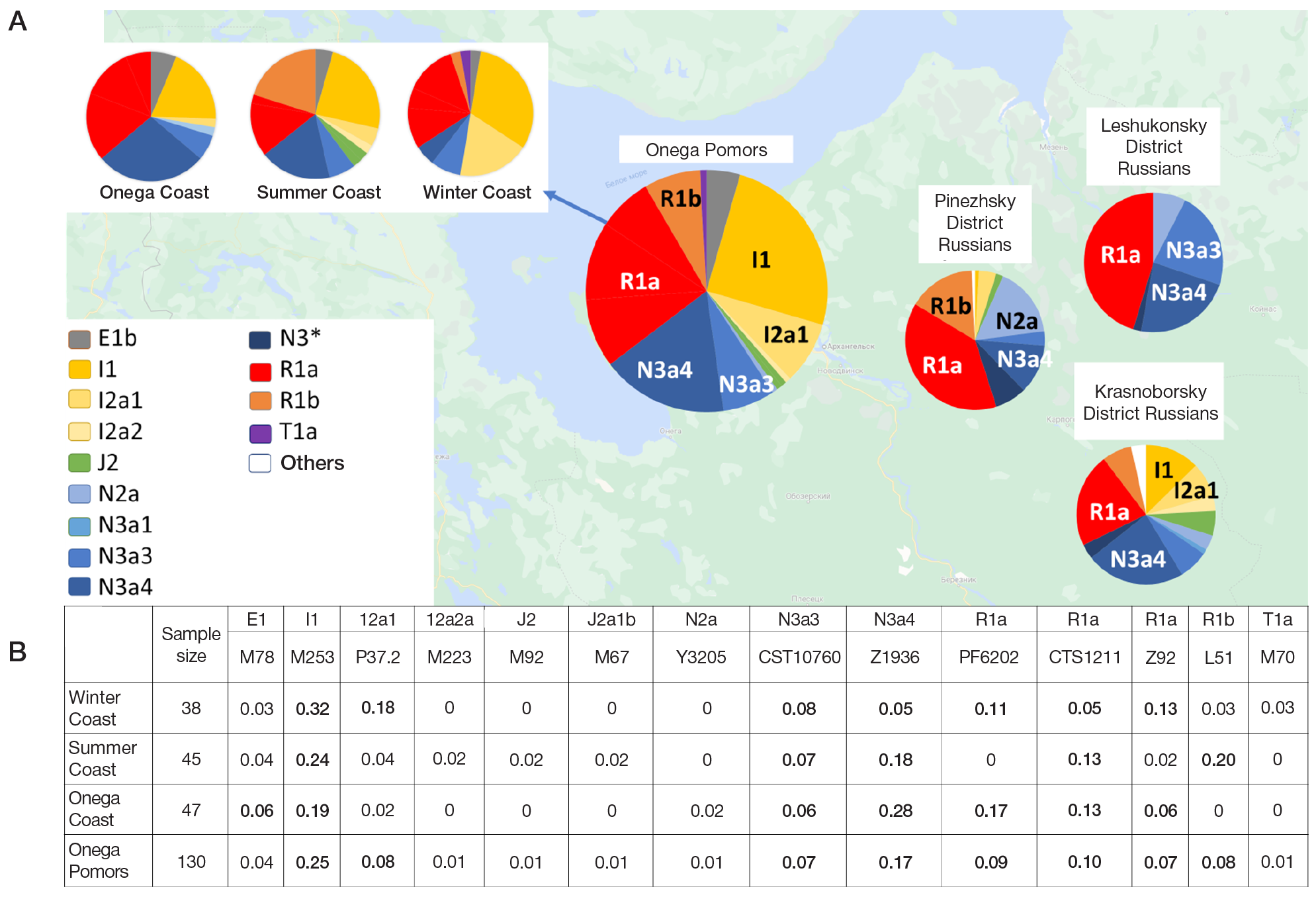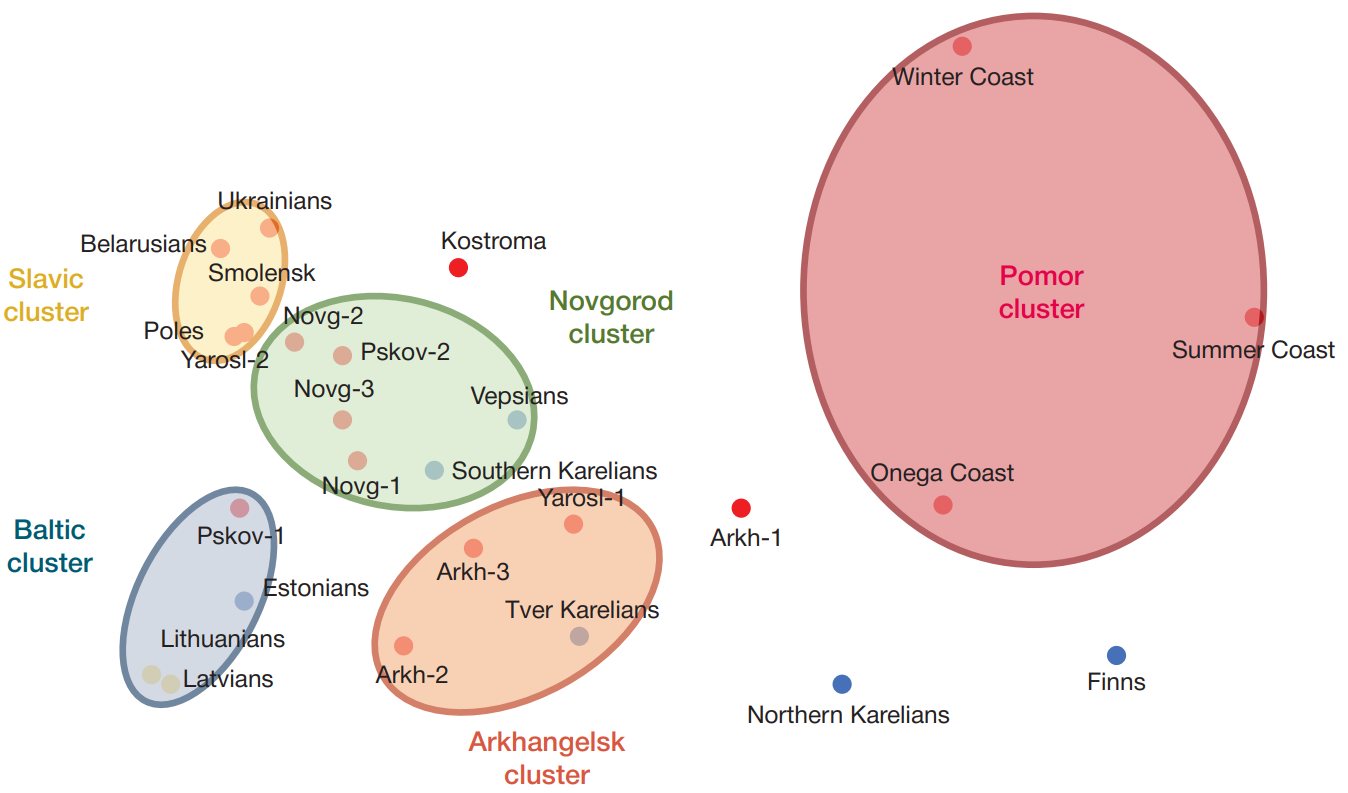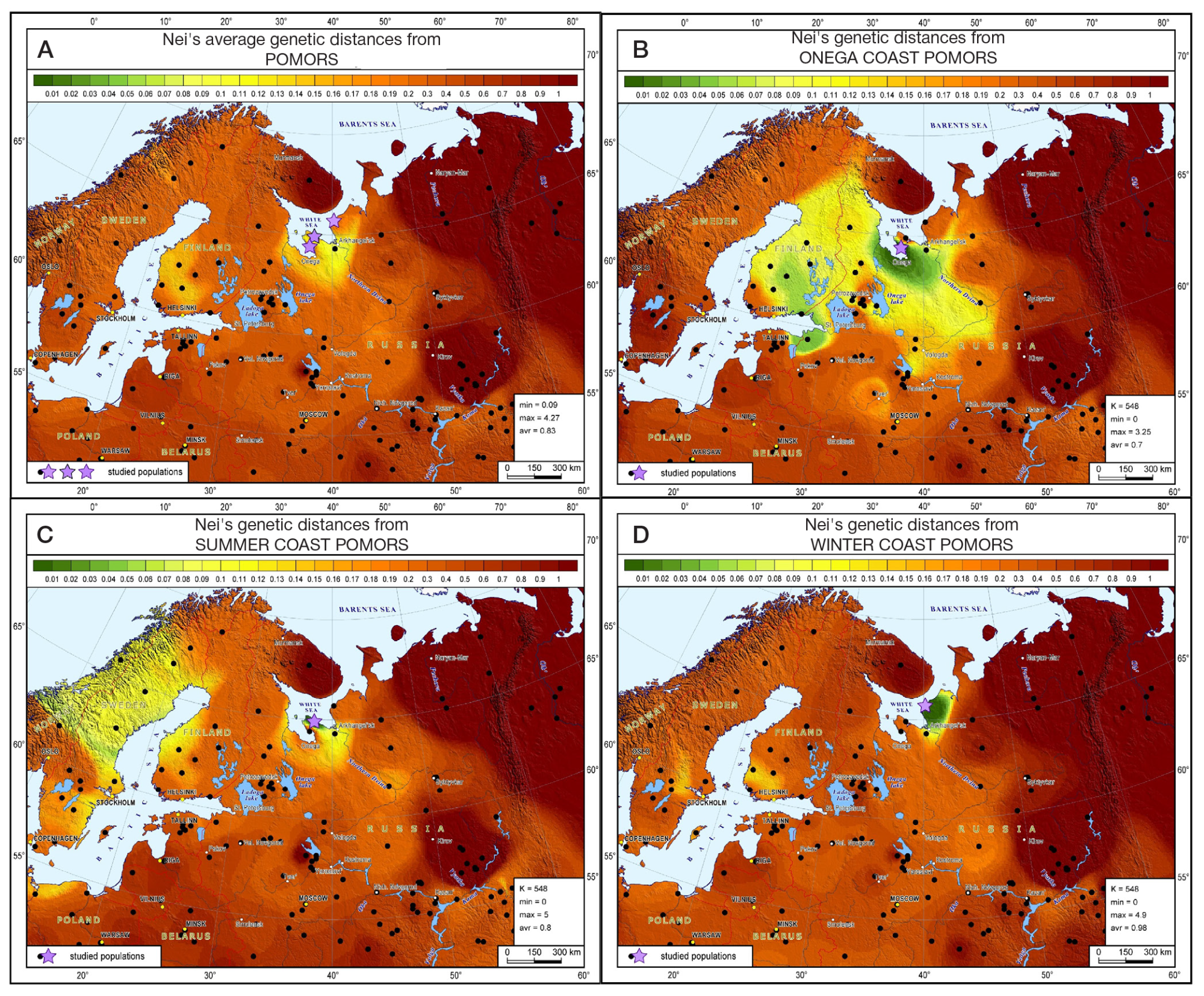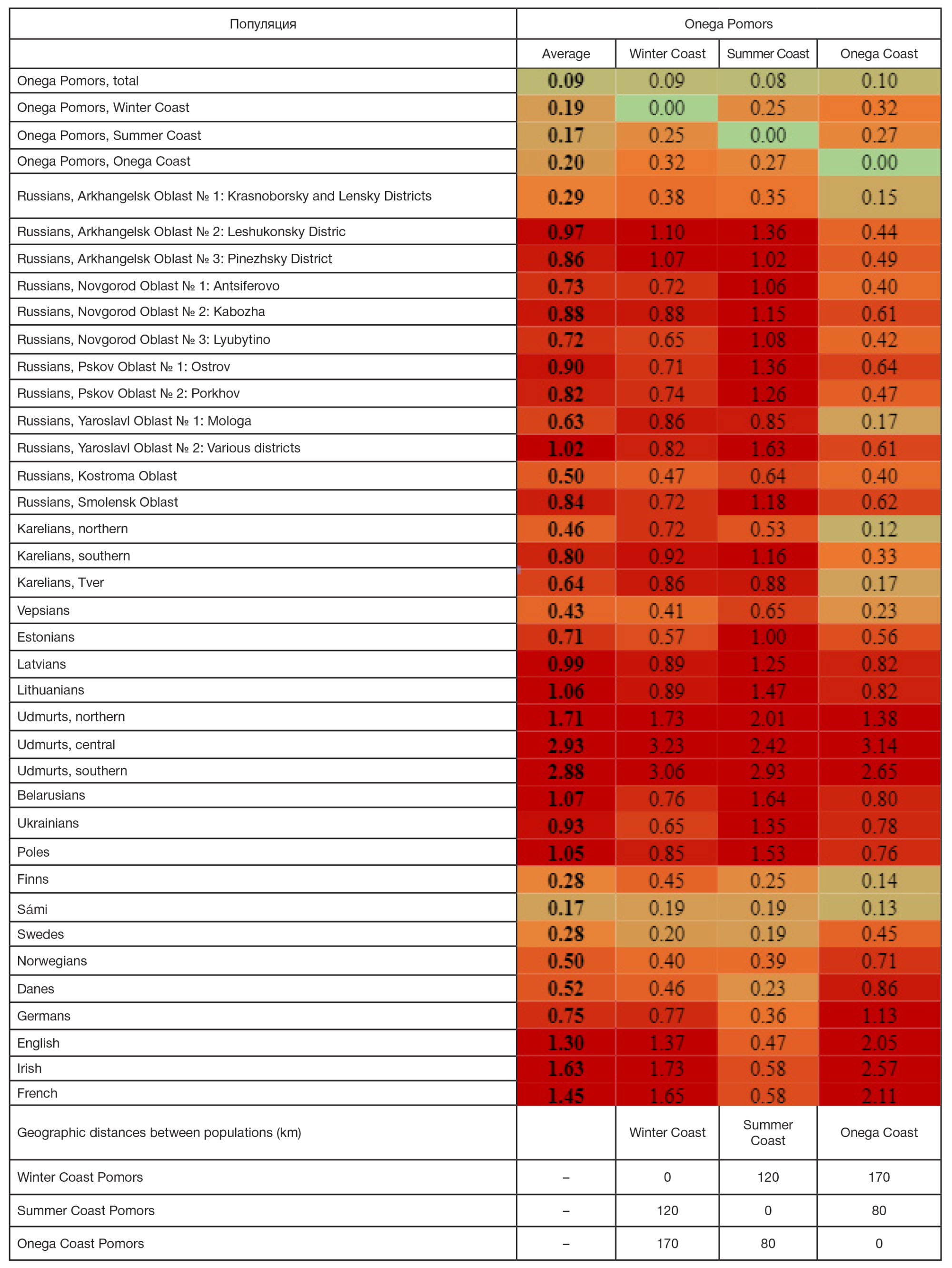
This article is an open access article distributed under the terms and conditions of the Creative Commons Attribution license (CC BY).
ORIGINAL RESEARCH
Peculiarity of Pomors of Onega Peninsula and Winter Coast in the genetic context of Northern Europe
1 Research Centre for Medical Genetics, Moscow, Russia
2 Biobank of North Eurasia, Moscow, Russia
Correspondence should be addressed: Vladimir S. Okovantsev
Moskvorechye, 1, 115522, Moscow, Russia; ur.xednay@vokoavov
Funding: The study was supported by grants from the Russian Foundation for Basic Research № 20-09-00479_a (field survey, statistical analysis, genotyping), Russian Science Foundation № 21-14-00363 (field survey, sample preparation, article writing), State task of the Ministry of Science and Higher Education of the Russian Federation for the Research Centre for Medical Genetics (cartographic analysis, result interpretation).
Acknowledgements: the authors thank all participants of the expedition survey (sample donors), the Administration and the Ministry of Health of the Arkhangelsk Oblast for organizational support and assistance in conducting the expedition survey, and the Biobank of North Eurasia for the access to DNA collections.
Author contribution: Balanovska EV — leadership of the expedition survey of Pomors; Okovantsev VS, Ponomarev GYu, Agdzhoyan Anastasia T, Agdzhoyan Anna T, Pylev VY — expedition survey of Pomors; Ponomarev GYu, Pylev VY — genotyping of Y-SNP markers; Agdzhoyan Anastasia T, Okovantsev VS, Agdzhoyan Anna T — statistical analysis, cartographic analysis; Balanovska EV, Agdzhoyan Anastasia T, Okovantsev VS — study design, article writing.
Compliance with ethical standards: the study was approved by the ethical review board of the Federal State Budgetary Scientific Institution «Research Centre for Medical Genetics» (protocol № 1 of 29 June 2020).
